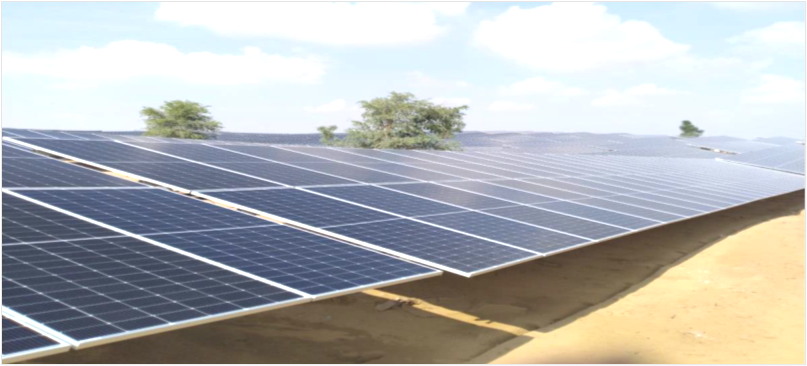
Dubai-headquartered renewable energy developer Jakson Green has signed a power purchase agreement (PPA) with the state-run utility National Hydroelectric Power Corporation (NHPC) for the output of a 400MW solar PV project in India.
The PPA was secured at a tariff of INR2.53 per kWh (US$0.03) in a competitive auction held by NHPC. The project itself is slated to begin operations within 24 months of the PPA signing.
Try Premium for just $1
- Full premium access for the first month at only $1
- Converts to an annual rate after 30 days unless cancelled
- Cancel anytime during the trial period
Premium Benefits
- Expert industry analysis and interviews
- Digital access to PV Tech Power journal
- Exclusive event discounts
Or get the full Premium subscription right away
Or continue reading this article for free
Located in the state of Rajasthan, the project brings Jakson Green’s independent power producer (IPP) project portfolio in India to 1GW, the company said. It aims to have 7.5GW of renewable energy assets by 2027 and 18GW by 2030.
NHPC is one of the largest energy utilities in the country. In June 2023, it announced a plan to develop 1GW of ground-mounted or floating solar PV projects in the Indian state of Odisha alongside the Green Energy Development Corporation of Odisha Ltd (GEDCOL). Odisha has one of the lowest solar generation capacities in India, with just 534MW of commissioned capacity and a 93MW pipeline as of summer last year. This is in comparison with states like Rajasthan and Gujarat which had a combined capacity of over 20GW last year.
The utility also sold a 300MW PV project to Singapore-based energy company Sembcorp in December 2023.
2024 has so far been a year of recovery for the Indian solar sector following underperformance in 2022 and 2023. Data from Indian research firm Mercom Capital showed that the sector saw a 400% increase in deployments in Q1 2024 compared with the same period in 2023. Over 10GW of new solar capacity came online between January and the end of March, over 9.7GW of which was in large-scale projects.
Unsurprisingly, Rajasthan was the dominant state for new capacity, representing 38% of the total installations. More notably, the uptick was largely due to the government’s decision to suspend the Approved List of Models and Manufacturers (ALMM) programme in March 2023, which limited the manufacturers and solar modules allowed access to the Indian market. The imposition of the ALMM had combined with the government’s restrictive import tariffs to create a supply shortage in India over 2022-23.






